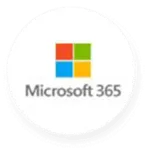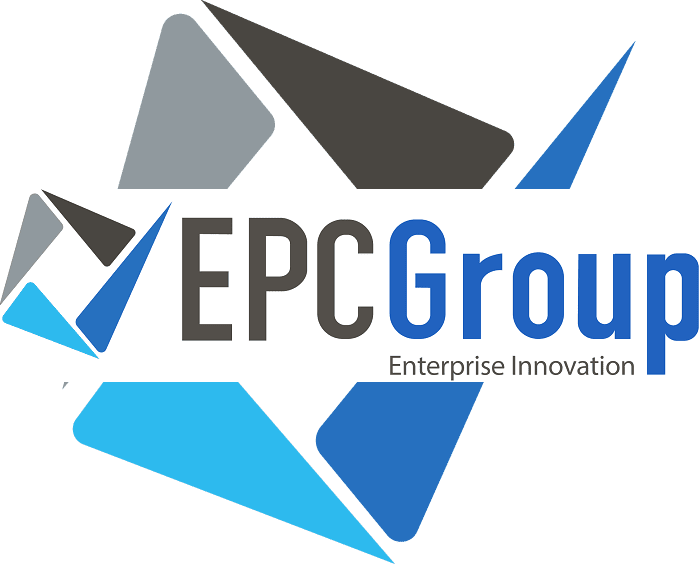CMMC Compliance Consulting Services
CMMC is a new set of cybersecurity standards for companies working with the Defense industry. Do you know how these guidelines will impact your company? EPC Group is here to help you meet CMMC requirements and get appropriately certified.
What is CMMC?
EPC Group's CMMC Compliance Consulting
CMMC stands for Cybersecurity Maturity Model Certification, with a motive to set new cybersecurity standards, especially for the companies working with or working for the Department of Defense.
After this certification, Microsoft is helping to safeguard national security data and has launched CMMC 2.0 as a robust defense. From the technical term itself, you can analyze the powerful base of data security provided to the defense industrial platform, where ultra-complex cyberattacks are increasing day by day.
Essentially it is a new umbrella standard comprising requirements from the Federal Defense Acquisition Requirements (DFARS 252.204-7012) and the National Institute of Standards and Technology (NIST). The idea of CMMC is primarily based on the NIST 800-171 model. It helped outline many aspects of cybersecurity, from psychical security to IT and cybersecurity. The new CMMC standards are based on the revised or NIST 800-171 rev1 model and strictly enforced with third-party assessments, audits, and certifications.
The CMMC presents a set of policies and practices that are imperative for all the companies supporting or feeding into the Defense Industrial Base (DIB). Through CMMC Certification, DoD is determined to compare the cybersecurity posture of DIB partners and suppliers in terms of cybersecurity threat handling and preparedness. Besides, it will also check how well cybersecurity is integrated within their organizational culture.
What is CMMC 2.0 an advanced version of CMMC?
With modern cyber security issues come modern solutions. Hence, CMMC 2.0 has taken the lead against CMMC compliance standards getting violated. An enhanced version of codifications, reflect the efforts which Microsoft has made to safeguard DoD contracts.
When the respective department completes the rule-making implementation, only then CMMC 2.0 becomes your contractual requirement. Understanding the CMMC assessment ecosystem, we focus only on the clarification of the cybersecurity requirements prevailing in your organization.
As an inseparable part of digitalization, it is essential to keep a comprehended cost for fulfilling federal security requirements, and therefore, CMMC 2.0 is the key to keeping up the pace.
CMMC 2.0 is a simplified rendition of how unique and mature is the process of fulfilling streamlined security requirements. Microsoft checks on the self-assessments, once CMMC 2.0 is implemented.
Why CMMC is Important?
EPC Group's CMMC Compliance Consulting
United States Department of Defense (US DoD) initiated the CMMC program for securing the Defense Industrial Base (DIB). The program follows a unified standard for cybersecurity aiming to protect both – the defense and the supplier information system. Besides, it also prevents Adversaries of the United States from manipulating, destroying, or stealing the defense information or putting US DoD systems in a compromising situation.
The US DoD wants the Defense Industrial Base (DIB) to follow the CMMC; because they do feel that their adversaries are weakening the defensive and offensive capabilities through supply chains. As the US Defense adversaries have access to critical weapon systems, degrading the defending capabilities of the nation through information systems of US DoD suppliers is a serious cause of concern.
Although these adversaries might have partial or complete access to the entire plan for a particular intellectual property like a weapon system, stealing it from multiple suppliers is always eminent. CMMC is designed to forbid such activities and eradicate all the vulnerabilities that may exploit at the time of choosing adversaries.
Why CMMC 2.0 is an essential element for securing defense information?
CMMC 2.0 has a control assessment for a scalable certification where implementation of best practices is implemented as per DoD. Covering the cyber security domains, the main advantage of CMMC 2.0 is subjected to advanced protection of controlled unclassified information (CUI).
CMMC requires that companies should be entrusted with the implementation of definite cybersecurity compliance standards, for securing national defense information. Hence, this advanced level must be progressively inculcated when this information flows down to subcontractors.
Compatibility Domains of CMMC Construct

Access Control (AC)
It’s a fundamental security domain and a set of security principles applied to both - physical and logical assets. CMMC defines 4 Access Control capabilities – Establish system access requirements, Control internal system access, Control remote system access, Limit data access to authorized users and processes.

Asset Management (AM)
An organization consists of many tangible and intangible assets - like buildings, laptops, people, PCs, and data. More assets mean a broader ‘attack surface’. CMMC defines 2 Asset Management (AM) capabilities - Identify and document assets, Manage asset inventory.

Awareness and Training (AT)
Being Forewarned is staying Forearmed. To identify and manage a cyber threat, an organization has to be aware of what they are and get trained to identify and handle them. CMMC defines 2 Awareness and Training (AT) capabilities -Conduct security awareness activities and Conduct training.

Audit and Accountability (AU)
Audit logging is an important requirement for system governance and is used in versatile activities. CMMC defines 4 Audit and Accountability (AU) capabilities – Define audit requirements, perform auditing, Identify and protect audit information, and Review and manage audit logs.

Configuration Management (CM)
It helps establish a consistent, controlled, and audited process to manage system changes and subsequently system security, performance, and functionality. CMMC defines 2 Configuration Management (CM) capabilities – Establish configuration baselines and Perform configuration and change management.

Identification and Authentication (IA)
Before allowing users to access systems, they need to be identified and authenticated. It keeps systems secure and free of nonauthorized access. CMMC defines 1 Identification and Authentication (IA) capability - Grant access to authenticated entities.

Incident Response (IR)
An IR plan is a clear set of actions to detect, respond and recover from an attack. CMMC defines 5 Incident Response (IR) capabilities – Plan incident response. Detect and report events, Develop and implement a response to a declared incident, Perform post-incident reviews, and Test incident response.

Maintenance (MA)
Frequent system maintenance ensures operations are running smoothly and minimizes the risks of breakdown. It helps find the vulnerabilities and prevent threats even before occurring. CMMC defines 1 Maintenance (MA) capability - Manage maintenance.

Media Protection (MP)
Data is the life and blood of modern organizations, hence needs to be protected in whatever form it takes, logical or physical. CMMC defines 4 Media Protection (MP) capabilities - Identify and mark media, Protect and control media, sanitize media, and Protect media during transport.

Personnel Security (PS)
The most important asset of an organization is its people, yet some of the largest security attacks and data breaches occur from inside making personal security all the more important. CMMC defines 2 Personnel Security (PS) capabilities – Screen personnel and Protect CUI during personnel actions.

Physical Protection (PE)
Physical and logical protection go hand in hand. You cannot protect assets such as computers, laptops, servers holding the company’s IP without Physical Protection. Physical protection ensures the safety of the organization’s IP infrastructure. CMMC defines 1 Physical Protection (PE) capability - Limit physical access.

Recovery (RE)
IT and system failures are part of organizations operating environment. A recovery plan Protects its assets, IP, FCI, CUI, and helps overcome specific disaster scenarios possible threats. CMMC defines 2 Recovery (RE) capabilities - Manage backups and Manage information security continuity.

Risk Management (RM)
An efficient Risk Management helps manage cyber-attacks and their consequences by identifying and managing the most significant of such risks, threats, or attacks. CMMC defines 3 Risk Management (RM) capabilities - Identify and evaluate risk, manage risk, and Manage supply chain risk.

Security Assessment (CA)
Security Assessment means evaluating security measures undertaken by the organization to manage its cyber risk profile. CMMC defines 3 Security Assessment (CA) capabilities - Develop and manage a system security plan, Define and manage controls, and Perform code reviews.

Situational Awareness (SA)
Cyber-attack is an impending threat to almost all organizations. Situational Awareness allows organizations to identify the threats which apply to their business either directly or indirectly. CMMC defines 1 Situational Awareness (SA) capability - Implement threat monitoring.

Systems and Communications Protection
System Communications Protection allows organizations to get a clear view of the adequate level of security that needs to be applied. CMMC defines 2 System Communications Protection capabilities - Define security requirements for systems and communications and Control communications at system boundaries.

System and Information Integrity (SI)
It is required to maintain the confidentiality, integrity, and availability of FCI and CUI. CMMC defines 4 Systems Information Integrity (SI) capabilities - Identify and manage information system flaws, Identify malicious content, Perform network and system monitoring, and Implement advanced email protections.

Start Your Journey to CMMC
CMMC certification is a must for all defense contractors to acquire a contract offered by the United States Department of Defense (DoD) starting from 2021. Besides, DoD is empowered to specify the level of CMMC certification needed for a specific contract for allotting it to the most appropriately certified federal contractors. By the end of 2026, DoD wants all the defense contractors to be CMMC Certified.
You must implement the CMMC systems and get certified as early as possible to become a qualified provider if your organization is doing business or is willing to do business with the Department of Defense as a Contractor, Subcontractor, or Supplier.
Previous Defense Federal Acquisition Regulation (DFAR) security protocol Successfully complied with the NIST 800-171, thereby protecting the Controlled Unclassified Information (CUI). However, the new CMMC model introduced multiple levels requiring third-party certifications. The Office of the Under Secretary of Defense for Acquisition and Sustainment will be responsible for managing the CMMC.
All US DoD RFP’s will mandate a CMMC level from 1-5, and this will affect prime contractors, along with suppliers to prime contractors in contract flow downs. From here on, every DoD Request for Proposal (RFP) will be listing the level of CMMC compliance required to place the bid, and all the bidders are expected to have achieved that level. Besides, they must possess proof of certification to place their bids.
How to get started with CMMC 2.0 and its compliance?
If you are a defense contractor then you are required to meet the 110 controls in NIST 800-171. The new CMMC 2.0 will arm the DoD in its efforts and will strengthen the cyber security technology against cyberattacks. CMMC 2.0 platform processes through federal rulemaking enforcement.
It is the most essential security control DoD contract to protect CUI and seek enforcement of federal control regulations governing defense compliance pathway.
CMMC 2.0 streamlines the security model by reducing the number of CMMC levels and provides a pathway toward a perfect and consistent Cybersecurity Maturity model framework certification.
Five Levels of Cybersecurity Maturity Model Certification

Fortunately, the CMMC Certification allows many current and prospective DoD contractors to undergo five classifiable levels of CMMC Certifications. A set of processes and practices at every level are designed to bring gradual cybersecurity maturity progression with every level. The levels range from initial “basic cyber hygiene” placed at level 1 to last advanced or progressive cybersecurity positioned at level 5. The processes range from “performed” at level 1 to “optimizing” at level 5.

Level 1: Basic Cyber Hygiene
- It includes 17 practices derived from NIST standards.
- It offers a performance-only approach to cybersecurity.
- It mostly covers basic cybersecurity practices that the majority of the companies working for DoD might have in place.

Level 2: Intermediate Cyber Hygiene
- It includes 72 practices with 55 new standards and 17 from level 1.
- It expects organizations to establish and document standard operating procedures, policies, and strategic plans for its cybersecurity plan.

Level 3: Good Cyber Hygiene
- It includes 130 practices.
- This level is mandatory for all DoD adversaries handling, using, or sharing CUI.
- Additionally, it requires a framework for incident reporting and the ability to demonstrate the management of practice implementation.

Level 4: Proactive
- It includes 156 practices and represents a more advanced cybersecurity system.
- Not many organizations are expected to reach level 4 CMMC certifications.
- This level expects organizations to review and document activities for effectiveness and convey all issues to the higher management.

Level 5: Advanced/Progressive
- It includes 171 practices and is the highest level of CMMC compliance.
- Level 3 certified organizations are expected to have the highest, advanced, and progressive cybersecurity in place.
- These organizations are capable to assess advanced threats and optimize tools for repelling those threats.

Introduction of 3 Levels of CMMC 2.0
CMMC 2.0 has lowered the CMMC levels from five to three. The new CMMC 2.0 levels are based on the type of data that DIB handles, hence the given below transition levels are developed.
- Level 1 (Foundation) is applied only for the protection of FCI. This level is based on 17 controls found in FAR 52.204-21. More focus on FCI and safeguarding of information of covered contractor, makes the access limited to authorized users.
- Level 2 (Advanced) has been offered to those companies which are working with CUI and mirrors NIST SP 800-171. Elimination of unique maturity practices to CMMC Level 2 is more aligned to 110 security controls. These security controls are developed by the National institute of technology and are standards for the protection of CUI.
- Level 3 (Expert) is mainly centric to risk reduction through threat intelligence and with the help of Advanced Persistent Threats (APTs). It is developed for companies working with DoD’s highest priority CUI programs.


How to Become Compliant with CMMC Requirements?
As per specifications mandated in DFARS Case 2019-D041, the full cybersecurity requirements adhering to CMMC are yet to be put in place. However, the Office of the Under Secretary of Defense for Acquisition & Sustainment has already made it clear that contract requirements outlining CMMC compliance will be awarded to only those parties that are appropriately CMMC level certified.
The best way to get CMMC Compliant is to start early, assess gaps, find best practices, remediate as per necessity, test, and re-access. Some of these changes will take time for full implementation and become a part of your company culture.
Here is a basic outline to become CMMC compliant:
- Understand if you can defend or handle the CUI or FCI and find the minimum certification requirements for CMMC compliance.
- Scrutinize readiness assessment – compare the current practices in your organization with the ones outlined for CMMC requirements. It will help you understand the appropriate level of CMMC certification.
- Conduct a risk assessment and create a plan to remediate gaps. Work to attain appropriate cybersecurity maturity level and measure its impact on budget and work culture. Also, understand how much time it will take to implement all the changes.
- Make it a habit of documenting all the new processes and practices you want to implement.
- Test the changes, validate the results, and document the results.
- At the right moment, involve a third-party Certified Auditing Organization (3PCAO) to conduct a formal audit.
- If possible, take help from a Managed IT Service Provider (MSP) for periodic evaluation and validation of cybersecurity maturity level.

CMMC Compliance Consulting from EPC Group
EPC Group is one of the leading Managed Security Service Providers in the USA. Their experience in implementing cybersecurity processes, accessing maturity processes, and applying government-wide policies makes them one of the go-to third-party assessors to initiate the CMMC certification process.
EPC Group has the technical expertise and appropriate knowledge to conduct readiness assessments and perform a gap analysis.
EPC Group will help you –
- Learn, understand, and train about CMMC technical requirements and prepare your organization for appropriate CMMC Certification, ensuring you maintain lifelong cybersecurity agility.
- Apart from meeting the essential 15 safeguarding environments under FAR, EPC will help you meet 110 controls under NIST 800-171 if you are creating any Controlled Unclassified Information (CUI).
- To keep you in a CMMC Compliant environment, EPC will monitor, detect, and report on cybersecurity incidents in an evolving technological atmosphere giving you enough time to address vulnerabilities and update your security plan.
- EPC Group will help you schedule your CMMC audit through a certified 3PAO. Depending on the results, EPC will help, either to bridge security gaps or stay CMMC compliant for the next three years for which your CMMC certification is valid.
Why Choose Us
Why Organizations Recognize EPC Group's Consulting Services as the Industry Leader

EPC Group wrote the book on SharePoint & Power BI

Microsoft Partner for 25+ Years
Over 4 million Office 365 users successfully migrated
200+ years combined senior team migration experience




